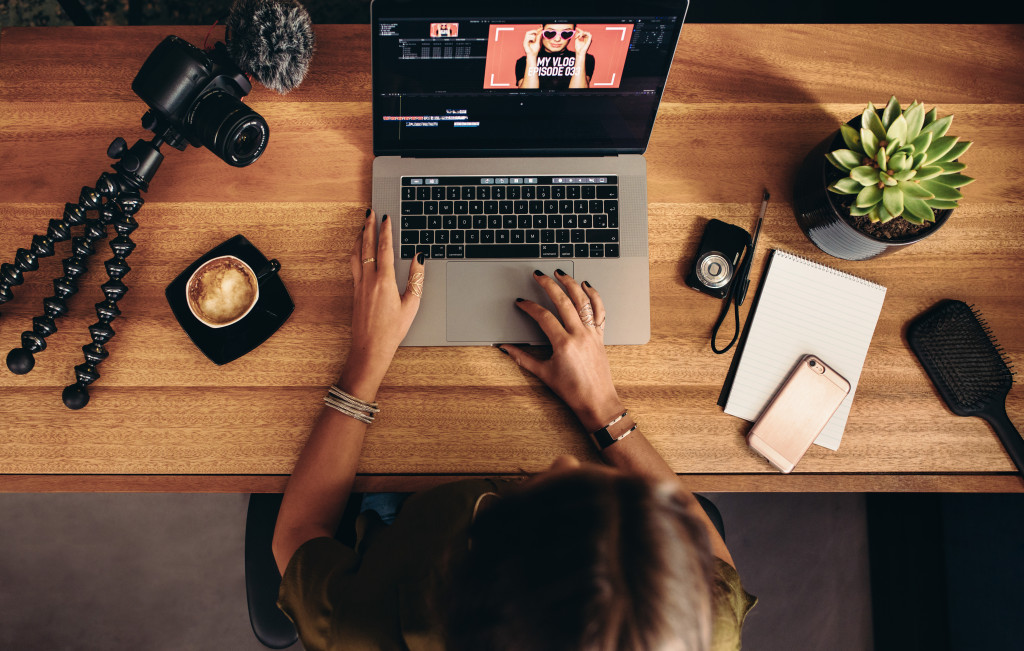Unless you have been living under the rock and have disconnected yourself from the internet for the past few years, chances are you have seen YouTube and Facebook videos with an overhead shooting style. This became popular with the “Tasty” series of videos from BuzzFeed, which shows recipe demos step-by-step with the camera placed overhead.
Overhead videos are not just great for cooking shows but also for other instructional types of content such as crafts and DIY tutorials and stop motion videos. This style is going to stay, and if you’re a content creator, creating overhead videos is one of the skills you should master. Everyone, from individual creators to video production companies, is using this style, and you should, too.
As for your camera options, you can use a smartphone or a DSLR. Most of the latest phones are capable enough to shoot fantastic videos, although it can be a challenge to edit videos in there because of the small screen. Of course, you can always transfer the video footage to your computer and do your editing there.
There’s no doubt about the benefits of using a DSLR. It gives better video quality than smartphones, and most of these cameras now come with apps that allow you to control them from your mobile device.
Why You Should Use the Overhead Style
The bird’s eye view that an overhead camera brings is a great way to showcase anything that takes place on a table. Here’s why these videos are so popular on social media:
It has captivating angles
– the angle itself captures the viewer’s attention effectively. It’s easier for people to imagine themselves doing the stuff on the video if they watch it from an overhead view. The direction makes it easier to grab and maintain people’s attention.
It’s easy to see most of the action
– the overhead camera gives viewers a bird’s eye view of the action. The view is better compared to videos shot from the side, in which one’s hands or arms can block what’s happening on the table.
There’s more visual interest
– when you make overhead videos as the main focus during editing, it can make the result more visually arresting.

3 Ways to Shoot an Overhead Video
There are three methods you can use to capture engaging and eye-catching videos — with a tripod, a boom pole, or a mirror.
Using a Tall Tripod
This is the simplest way to do this shoot from above in which you raise the tripod high above and then point it down. Of course, this does not give a perfect 90-degree angle, but this is more than good enough to capture everything you need. You will need a tall tripod for this, which you will position as close to the surface or table as possible. Need more height for the tripod? Bring the legs closer to each other or put the two front legs on the surface or table you are using for the demo.
Using the Boom Pole Holder
In this method, you will use a combination of a boom pole holder and a monopod. You will also need a grip head (for the boom pole holder), a strong light stand, and sandbags. You clip the camera into the monopod, and then you slip this into the boom pole holder. Make sure everything is locked tight so the camera wouldn’t fall. This setup will be pretty heavy on the top, so you use the sandbags to hold down the boom pole stand.
A common problem for shooting overhead is the zoom lenses can slip and not maintain focal length. You can avoid this by using a fixed lens and get the right framing by raising or lowering the light stand.
Using the Mirror Rig
This setup is a bit more ambitious, but it’s worth the time figuring it out if you plan to do overhead shots regularly. The rig allows you to shoot up at the mirror from the ground. You can easily change zoom or focus or make necessary camera adjustments from this position. You complete the process by applying a flip effect during post-production to correct the image, which produces the overhead shot.
Great lighting comes hand in hand with camera setups when producing quality videos. Lighting overhead setups like a pro is not as hard as you think. For most setups, all it takes is one big key light with a softbox and a bounce board. It can produce enough light to expose your overhead shots properly. The softbox diffuses the light to produce a soft and even glow without the shadows.
Elevate your video footage by making great use of overhead shots. Your viewers will love the new vantage point, which will sustain their interest in your content.

